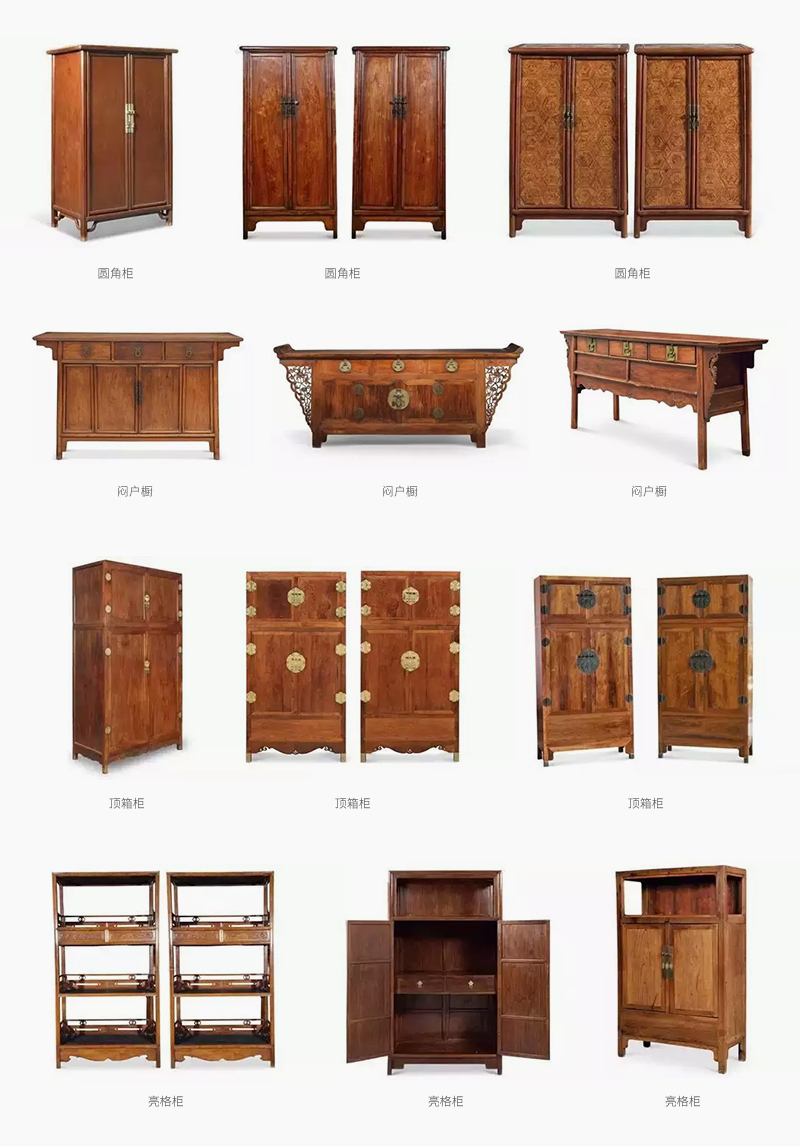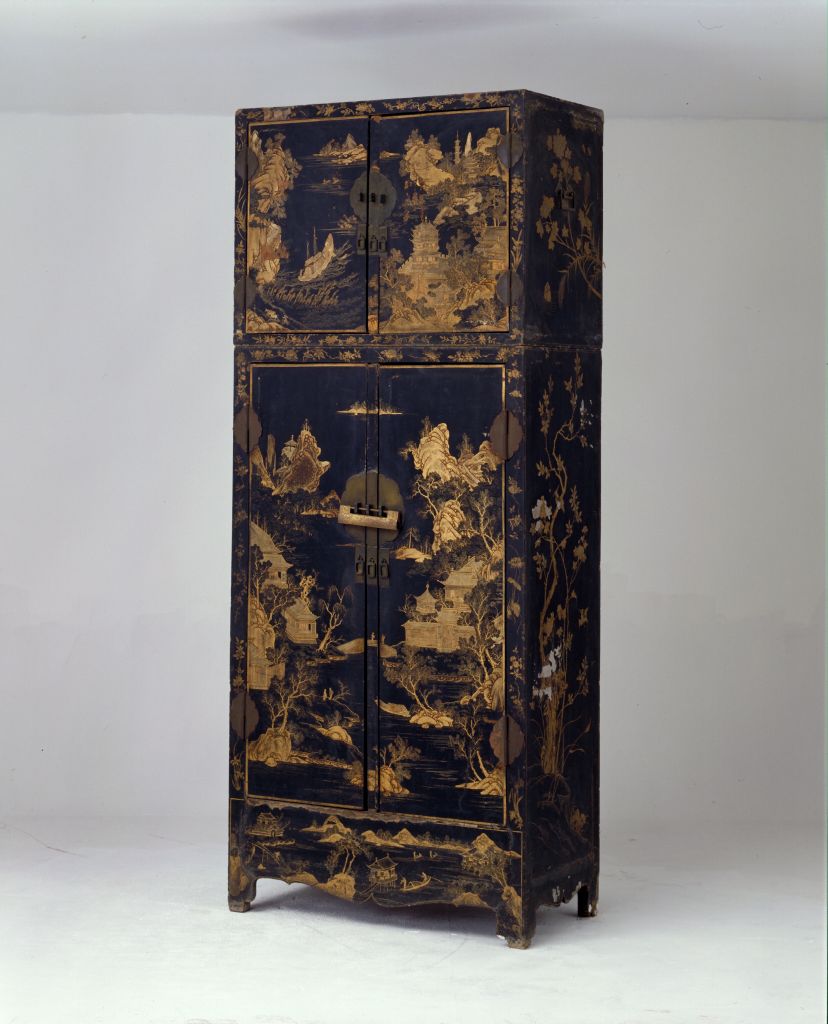
漢德百科全書 | 汉德百科全书


Das Badminton Cabinet ist ein Barockschrank, der im 18. Jahrhundert in den Pietra-Dura-Werkstätten der Medici in Florenz für den Duke of Beaufort in England hergestellt worden ist. Er gehört zu den berühmtesten Möbelstücken und ist das derzeit teuerste Möbelstück der Welt. Der Schrank ist im Gartenpalais Liechtenstein in Wien ausgestellt.
Der Schrank ist knapp 4 m hoch, 2,3 m breit und besteht aus Ebenholz mit vergoldeter Bronze. Die Bilder in den Einlegearbeiten, auf denen Vögel und Blumen dargestellt sind, enthalten Lapislazuli, roten und grünen sizilianischen Jaspis, Amethyst und Quarz. Oben wird der Schrank von Figuren, einer Uhr und einem Wappen gekrönt.
Der dritte Herzog von Beaufort, Henry Somerset, gab das aufwendige Möbelstück 1726 auf einer Italienreise in Auftrag; 1732 war es fertiggestellt. Bis 1990 war es im Besitz der Herzogsfamilie, bevor es an Barbara Piasecka Johnson verkauft wurde. 2004 wurde er in London bei Christie’s für 17 Millionen Pfund (24,6 Millionen Euro) plus Aufgeld versteigert und von Fürst Hans Adam II. von und zu Liechtenstein erworben.



In 1708, the prototypes for this commode, then called a pair of bureaux, were delivered to the Grand Trianon by André-Charles Boulle. The duc d'Antin, director of the king's buildings, wrote to Louis XIV: "I was at the Trianon inspecting the second writing desk by Boulle; it is as beautiful as the other and suits the room perfectly."[1] Not until the Trianon inventory of 1729 were the pieces described as "commodes." (They are often called commodes Mazarines because they stood during the nineteenth century and the first third of the twentieth in the Bibliothèque Mazarine in Paris.)[2] From the beginning, the design proved to be immensely popular, although it has also been criticized for an "awkward treatment of forms," meaning, in particular, the four extra spiral legs that were required to support the weight of the bronze mounts and marble top.[3] Nevertheless, the Boulle workshop made at least five other examples of this expensive model, including the Metropolitan's. Traditionally, they have been dated between 1710 and 1732, the year of Boulle's death; by 1730, however, the decorative style of the Sun King's long reign had been supplanted by the lighter forms of the Régence and early Rococo, and a date of 1710–20 is probably more accurate.
It seems strange that the duc d'Antin and probably Boulle himself should have called this new type of chest a bureau, yet they may have seen it in connection with the bureau plat, a flat-topped desk with a large writing surface that was currently being developed. A very fine example of the celebrated Boulle bureau plat is the one made for Louis-Henri de Bourbon (1692–1740), prince de Condé, for the Château de Chantilly.[4]
The design of the commode reflects the view of the late Louis Quatorze period that court art should be characterized by opulence and swagger. John Morley has pointed out that "the extraordinary way in which its body is, as it were, slung between the eccentric legs is somewhat reminiscent of carriage construction."[5] Indeed, if the tapering spiral supports behind the paw feet could be removed, the resemblance would be even more striking. Like one of the splendid carriages that rolled down the road to Versailles––a moving "billboard" for the glorification of its owner[6]––this commode was intended to impress.
A look at some details reveals the unsurpassed skill and artistic imagination of the Boulle workshop. The three-dimensional acanthus-leaf scroll mount on the upper drawer was a signature ornament of Boulle's, one that he employed on many pieces.[7] Its design is echoed in the light-catching two-dimensional brass-and-tortoiseshell marquetry on both drawer fronts. This refinement extends the movement along the surface of the piece and heightens the bulging appearance of the body, as if some power within was pressing the surface outward. This effect of surface tension is one of the reasons why Boulle's pieces dominate the space around them, becoming the focal point of any interior. Extraordinary are the female figures with paw-and-acanthus feet that support the sarcophagus-shaped body.[8] The sensitive finishing of the bronze surface of these sculptures is especially noticeable in the matted, feathery look of the wings, which is achieved by chiseling, and in the sheen of the burnished areas.
André-Charles Boulle, who was named King's Cabinetmaker, Chaser, Gilder, and Engraver in 1672,[9] headed an important workshop at the Louvre. He did not invent the metal-and-tortoiseshell marquetry technique named for him, but he perfected it, and it bestows upon his creations a unique look, raising them to a level of artistry where furniture becomes sculpture. Through his etchings Boulle publicized his exquisitely fashionable line of products, both stimulating and reflecting a new taste for luxurious furnishings.[10] Every collector of grand French furniture has acquired a "Boulle," either an original workshop example or one of the countless copies that were made during the late-eighteenth, nineteenth, and twentieth centuries.[11]
[Wolfram Koeppe 2006]
Footnotes:
1. "J'ai été à Trianon pour voir le second bureau de Boulle; il est aussi beau que l'autre et sied à merveille à cette chambre"; quoted in The Metropolitan Museum of Art. The Jack and Belle Linsky Collection in The Metropolitan Museum of Art. New York, 1984, p. 206, no. 126 (entry by William Rieder).
2. They were installed at the Château de Versailles in 1932.
3. James Parker in Olga Raggio, James Parker, Clare Le Corbeiller, Jessie McNab, Clare Vincent, and Alice M. Zrebiac. "French Decorative Arts during the Reign of Louis XIV, 1654–1715." The Metropolitan Museum of Art Bulletin 46, no. 4 (Spring 1989), pp. 20–21. See also Louis XIV: Faste et décors. Exh. cat., Museée des Arts Décoratifs. Paris, 1960, p. 19, nos. 84, 85, pl. XXXV; Jean-Pierre Samoyault. André-Charles Boulle et sa famille: Nouvelles recherches, nouveaux documents. Hautes études médiévales et modernes 40. Geneva, 1979, pp. 68, 84–85; and Daniel Meyer. Versailles: Furniture of the Royal Palace, Seventeenth and Eighteenth Centuries. Vol. I, Prestigious Royal Furniture. Trans. Ann Sautier-Greening. Dijon, 2002, pp. 54–57, no. 9.
4. Pierre Arizzoli-Clémentel. Versailles: Furniture of the Royal Palace, Seventeenth and Eighteenth Centuries. Vol. 2. Dijon, 2002, pp. 42–45, no. 6.
5. John Morley. The History of Furniture: Twenty-five Centuries of Style and Design in the Western Tradition. Boston, 1999, p. 154, fig. 275.
6. Rudolf H. Wackernagel. Der französische Krönungswagen von 1696–1825: Ein Beitrag zur Geschichte des repräsentativen Zeremonienwagens. Neue Münchener Beiträge zur Kunstgeschichte 7. Berlin, 1966.
7. Peter Hughes, The Wallace Collection: Catalogue of Furniture. 3 vols. London, 1996, vol. 2, p. 644, no. 138. I am most grateful to Yannick Chastang, London, for bringing this detail to my attention when we examined the commode, in the company of Mechthild Baumeister, Conservator, Department of Objects Conservation, Metropolitan Museum, in March 2004.
8. The screws with which they are attached to the body are unusually large. They can be seen as a particular workshop feature, as they repeatedly recur on pieces by Boulle. For a similar sarcophagus-shaped commode, see ibid., vol. 2, pp. 632–38, no. 136.
9. "ébéniste, ciseleur, doreur et sculpteur du roi"; Alexandre Pradère. Les ébénistes français de Louis XIV à la Révolution. Paris, 1989. English ed.: French Furniture Makers: The Art of the Ébéniste from Louis XIV to the Revolution. Trans. Perran Wood. London, 1989, p. 67.
10. Ibid., pp. 66–108.
11. For copies, see Claudio Paolini, Alessandra Ponte, and Ornella Selvafolta. Il bello "ritrovato": Gusto, ambienti, mobili dell'Ottocento. Novara, 1990, pp. 382, 393; and Theodore Dell. "French Furniture: Eighteenth and Nineteenth Centuries (Part I)." In Frick Collection, The Frick Collection: An Illustrated Catalogue, vol. 6, Furniture and Gilt Bronzes: French, ed. Joseph Focarino, pp. 3-240. New York, 1992, pp. 233–46.



HergestelltInfo
wer Johann Melchior Kambly (1718-1782) Zur Personenseite: Johann Melchior Kambly (1718-1782)
wann 1765 [circa]
wo Potsdam

This table has long been recognized as one of the masterpieces of Jean-François Oeben, cabinetmaker to Louis XV (1710–1774).[1] It was made for Oeben's most important client, the king's mistress Madame de Pompadour (1721–1764). The main charge of her coat of arms, a tower, appears at the top of the gilt-bronze mount at each corner. On the vase at the center of the marquetry top is the ducal coronet (Madame de Pompadour was given the title "duchesse-marquise de Pompadour" in 1752). The top, a tour de force of Rococo design, shows allegorical trophies of her chief interests-architecture, music, painting, gardening, and, last but not least, love-within a scrolling foliate border, executed with dazzling skill in marquetry of etched, stained, and natural mahogany, rosewood, holly, and other woods. Combining an extraordinary design with marquetry of great sophistication, the top is one of the finest panels in all of Oeben's furniture.
Oeben's skills are also apparent in the elaborate mechanism that allows the top to slide back as the large drawer below moves forward. With the drawer open, the table could be used for either reading or writing. A central arched panel, hinged at the front, rises by means of a hidden ratchet support and contains a rectangular panel, which can be rotated and fixed in position so that either side faces forward. One side of this panel is lined with blue moiré silk; the other contains a panel of imitation Japanese lacquer. Flanking this are two flaps, which are inlaid with large tulips overlapping ribbon-bound borders and which cover two shaped compartments veneered with tulipwood. A concealed button releases a shallow drawer below the reading-and-writing panel. One of the most unusual features of this table is the treatment of the legs, each of which is pierced with three openings framed with a gilt-bronze rim. This detail is unique in Oeben's work.
Madame de Pompadour ordered a number of pieces of furniture from Oeben in 1761, but it is not clear that this table was among them. This group was left unfinished on Oeben's death in 1763 and completed by his brother-in-law, Roger Vandercruse (called Lacroix; 1728–1799), whose stamp (R.V.L.C.) along with Oeben's and also "JME," the monogram of the guild, are found on the underside of this table. It cannot be identified in the inventory prepared after Oeben's death, either in the list of ten items awaiting delivery to Madame de Pompadour or in his large stock of completed and partly completed furniture, mainly because of the brevity of the entries.[2] Madame de Pompadour died in April 1764, and the inventory of her possessions presents the same problem.[3] Whether she ever took possession of this table has not been determined.
Oeben made a number of similar tables with sliding tops and drawers, sometimes fitted as combination writing and toilette tables. The related tables by Oeben are in the Musée du Louvre, Paris; the J. Paul Getty Museum, Los Angeles; the Huntington Art Gallery, San Marino, California; the National Gallery of Art, Washington, D.C.; the Rijksmuseum, Amsterdam; the Residenzmuseum, Munich; the Victoria and Albert Museum, London; the Bowes Museum, Barnard Castle, Durham; and the Museu Calouste Gulbenkian, Lisbon.
For such a well-known piece of furniture, this table has a surprisingly vague history until the early twentieth century. It may have belonged to Madame de Pompadour's brother and principal heir, the marquis de Marigny, although there is no evidence to support this idea.[4] In the catalogue of the 1928 sale of Judge Elbert H. Gary's collection,[5] a series of previous owners of the table was listed (the marquess of Tullibardine; Mrs. Mary Gavin Baillie-Hamilton; and Lady Harvey, London, from whom it was acquired by the Paris dealers Lewis and Simmons), but in none of these collections has it been documented. In the twentieth century it was sold twice at public auction, both times fetching record prices for a piece of French furniture: at the Gary sale it was acquired by the dealer Joseph Duveen (1869–1939), and at the sale of the Martha Baird Rockefeller collection in 1971, it was acquired by Jack and Belle Linsky.[6]
[William Rieder, 2006]
Footnotes:
1. For a more detailed discussion of this table and a partial bibliography, see The Metropolitan Museum of Art. The Jack and Belle Linsky Collection in The Metropolitan Museum of Art. New York, 1984, pp. 210–12, no. 128 (entry by William Rieder). See also William Rieder. "A Table for Madame de Pompadour." Magazine Antiques 151 (January 1997), pp. 226–29.
2. Jules Guiffrey, ed. "Inventaire de Jean-François Oeben." Nouvelles archives de l'art français, 3rd ser., 15 (1899), pp. 298–367.
3. Jean Cordey, Inventaire des biens de Madame de Pompadour: Rédigé après son décès. Paris, 1939.
4. Ronald Freyberger. "The Judge Elbert H. Gary Sale." Auction 2, no. 10 (June 1969), pp. 12–13.
5. Judge Elbert H. Gary sale, American Art Association, New York, 21 April 1928, lot 271.
6. Martha Baird Rockefeller sale, Sotheby's, New York, 23 October 1971, lot 711.




 Art
Art

 History
History
 Review
Review
 Traditions
Traditions